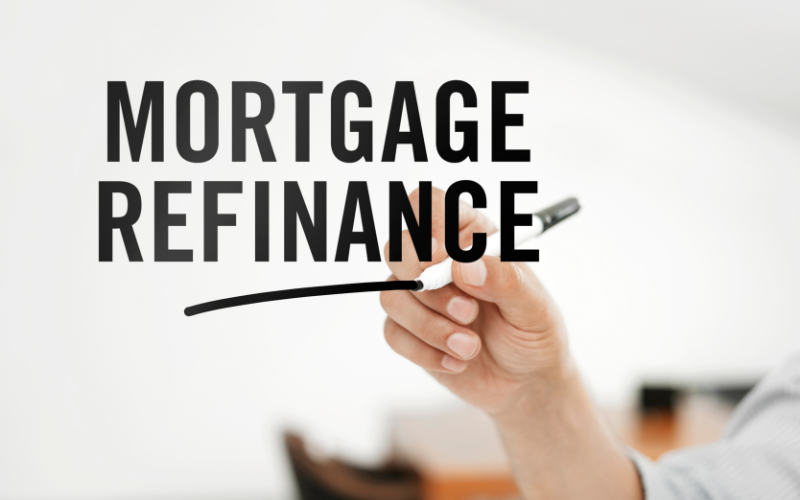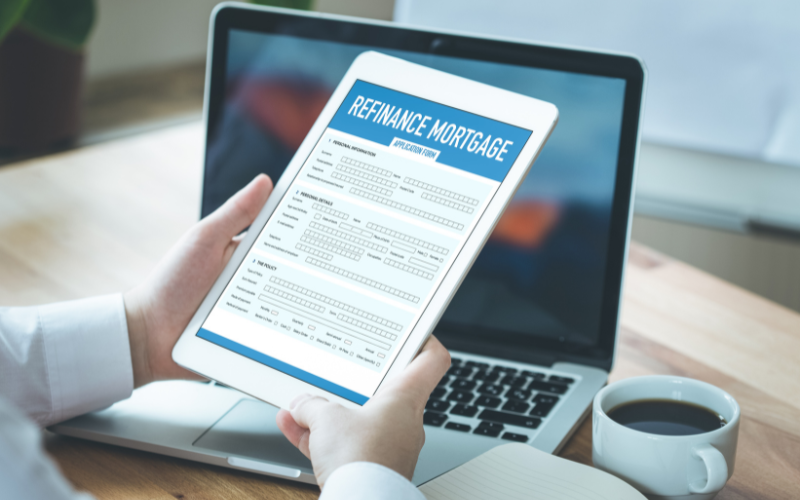Refinancing can feel overwhelming when you’re self-employed, but in San Diego’s competitive housing market, it’s often the smartest way to reduce monthly payments, pull cash for business growth, or restructure debt. Unlike traditional W-2 borrowers, business owners, contractors, and freelancers face unique challenges—especially when tax write-offs shrink “qualifying income” on paper.
The good news? Self-employed refinancing in San Diego doesn’t have to be complicated. Lenders simply need the right documentation path—whether that’s full-doc using tax returns or a bank-statement loan that reflects real cash flow. By understanding what lenders truly look for (credit score, debt-to-income ratio, loan-to-value, and business stability), you can prepare your file for the smoothest approval possible.
Quick Answer
- How do I prove income if I’m self-employed?
Lenders will use two years of filed tax returns (or 12–24 months of business/personal bank statements for certain Non-QM loans) to calculate your average qualifying income after write-offs. - What ratios matter most?
Debt-to-Income (DTI) and Loan-to-Value (LTV) drive approvals. Lower DTI and more equity help your case. Many conventional cash-out refis cap LTV around 80%; bank-statement options can vary. - What credit score do I need?
Strong scores (often 680+ for many conventional scenarios) open better rates. Non-QM bank-statement programs may allow lower minimums with trade-offs. - What if my tax returns show “low” income from write-offs?
Consider bank-statement loans, P&L + CPA letter options, or asset-depletion underwriting. Some add-backs (like depreciation) may help under certain guidelines. - How do I improve approval odds fast?
Lower revolving balances, document business stability, season funds, avoid new debt, and choose the right documentation path (returns vs. bank statements) before you apply.
Who This Guide Is For
If you own a business in San Diego—contractor in North Park, creative in Hillcrest, tech consultant in Sorrento Valley, or a short-term rental host along the coast—and you want to refinance for a better rate, cash-out, or simpler monthly payments, this is your playbook. I’ll walk you through what lenders actually check, the documents you’ll need, and smart moves to strengthen your file before anyone pulls credit.
“Self-employed borrowers aren’t ‘hard’—they’re just unique. When we choose the right documentation path and prep your file, approvals get a lot easier.” — Trevor Sanders
Why Self-Employed Refinancing Feels Different
The Big Difference: Variable Income + Write-Offs
When you work for yourself, your income often fluctuates and your tax returns include deductions that lower taxable income. Great for taxes, but it can shrink your qualifying income on paper. That’s why lenders look beyond a single W-2 number and dig into how your business actually performs.
San Diego Twist
Coastal markets like San Diego also add property-type and price layers—condos with HOA rules, ADU income, jumbo balances in neighborhoods like La Jolla or Del Mar, and investment properties near the beach. The right loan fit matters.
Related post: Mortgage Options for Self-Employed Homebuyers in San Diego: What You Need to Know
The Two Main Documentation Paths
When it comes to qualifying for a mortgage as a business owner or self-employed professional, lenders typically follow two main documentation paths: traditional full-doc loans and bank-statement (non-QM) loans. Each option has its own strengths and trade-offs, depending on how your income is reported and how your business finances are structured. Choosing the right path can make the difference between securing the most competitive rate—or unlocking financing when traditional methods fall short.
1) Full-Doc (Traditional) Using Tax Returns
- Who it’s for: You’ve filed the past two years and the numbers look consistent—or better in the most recent year.
- What underwriters review:
- Schedule C (sole prop) or K-1s (partnerships/S-corps), 1120/1065 (corporate returns)
- Add-backs like depreciation, one-time expenses (case-by-case)
- Business liquidity if needed
- Pros: Often the most competitive rates.
- Cons: Heavy write-offs can undercut qualifying income.
2) Bank-Statement (Non-QM) Loans
- Who it’s for: Your tax returns are lean from write-offs, but your cash flow is strong.
How it works: Lenders analyze 12–24 months of bank statements (business or personal) to determine average monthly deposits and apply an expense factor (actual CPA-verified or a standard %, depending on program).
- Pros: Can qualify more income than tax returns show; flexible on recent self-employment history in some cases.
- Cons: Higher rates and costs than conventional; program rules vary.
My take: If your returns show plenty of income, full-doc is usually best. If write-offs bury your income, bank-statement options can be a lifesaver—especially for cash-out projects, debt consolidation, or reshaping monthly cash flow.

What Lenders Really Look At (And How To Shine)
When lenders review a self-employed borrower, they’re not just looking at a credit score or tax return—they’re analyzing the whole picture of financial stability, income, and risk. Understanding what really matters (and how to present your file in the best light) can put you a step ahead in the approval process. From showing business stability to keeping debt in check, here are the key factors lenders focus on—and how you can shine in each one.
1) Stability & Time-in-Business
- Target: 2+ years self-employment.
- What helps: Business license, CPA letter, entity docs, clean bank activity, and a simple “About the Business” letter explaining what you do and how you get paid.
2) Qualifying Income
- Full-Doc: Two-year average of net income (with allowed add-backs). If the latest year is higher and stable, some programs may use just the most recent year.
- Bank-Statement: Average eligible deposits over 12–24 months minus an expense factor (varies by industry and program).
- Pro tip: Separate business and personal accounts. Mixed deposits make income harder to document.
3) Debt-to-Income (DTI)
- The ratio of total monthly debts vs. qualifying income.
- Improve it: Pay down revolving balances, consolidate small payments, or remove authorized-user accounts you don’t need.
4) Loan-to-Value (LTV) & Equity
- Rate/Term refi: Often higher LTV allowed than cash-out.
Cash-out refi: Many programs cap around 80% LTV (varies by program/occupancy). More equity = better pricing and easier approvals.
5) Credit Profile
- Score & depth matter.
- Keep utilization low (ideally under 30% on revolving lines) and avoid new trade lines before you apply.
6) Reserves (Savings After Closing)
- Some programs require months of reserves (e.g., 3–12 months of mortgage payments).
- Cash in the bank, retirement accounts, and certain investments can count.
7) Property & Occupancy
- Primary, second home, or investment status affects pricing and LTV.
Condos may need HOA docs; ADU or short-term rental income is possible with the right program and evidence.

The “Write-Off” Problem—And How We Solve It
For many self-employed borrowers, the same tax strategies that minimize IRS liability can backfire when it’s time to qualify for a mortgage. Lenders don’t always see the full story behind deductions and write-offs, which can make your income look much lower on paper than it truly is. The good news? There are smart ways to bridge the gap between tax planning and mortgage qualifying.
Common Deduction Pitfalls
- Massive vehicle, home-office, or equipment write-offs that help at tax time can hurt your qualifying income.
- One-time losses from an unusual year can depress the two-year average.
Smart Fixes
- Use allowed add-backs (depreciation, non-recurring expenses).
- Consider bank-statement or P&L + CPA letter programs when returns are too lean.
- If you’re months away from filing, talk to your CPA about how timing and presentation may affect qualifying income.
Related post: How to Get a Mortgage While Self-Employed in San Diego
Choosing Between 12- and 24-Month Bank Statements
Not all bank-statement loans are created equal—one of the biggest choices is whether to use 12 months or 24 months of statements. The right option depends on your income patterns, business type, and how consistent your deposits look over time. Knowing how lenders view each scenario can help you decide which path gives you the strongest qualifying income.
- 24-month average: Smoother for seasonal businesses (think contractors, designers, wedding vendors).
- 12-month average: Faster path if the last year is strong and stable.
- Business vs. personal statements: Business accounts often require an expense factor; personal statements can sometimes get lower assumed expenses if business inflows are clearly identified.
Cash-Out Refinance Ideas (San Diego Edition)
For San Diego homeowners, a cash-out refinance can be more than just tapping equity—it’s a tool to reinvest in your property, your business, or your financial peace of mind. Whether it’s building an ADU, wiping out high-interest debt, or freeing up cash flow, the right strategy depends on your goals and how lenders view equity, LTV, and pricing. Here are some smart ways local borrowers are putting their equity to work.
- Renovations/ADU build to increase value or rental income.
- Debt consolidation (reduce high-interest revolving debt).
- Business working capital for growth or marketing.
- Recasting term to bring monthly payments in line with income seasonality.
Heads-up: Cash-out can affect LTV caps and pricing. We’ll run scenarios to see if a second lien (HELOC) or a rate/term + small HELOC combination is smarter.
Jumbo & Non-QM in High-Cost Neighborhoods
Luxury areas (La Jolla, Del Mar, Rancho Santa Fe, coastal Encinitas) often push loan sizes into jumbo territory. If full-doc doesn’t work, jumbo bank-statement programs exist—but require extra care on DTI, reserves, and equity. Expect more documentation and tighter underwriting for investment properties and multi-unit homes.
Seven Ways to Boost Approval Odds (Before You Apply)
Getting approved isn’t just about what happens after you apply—it’s about how you prepare before your file ever reaches an underwriter’s desk. A little strategy up front can improve your credit profile, strengthen your income story, and make the entire process smoother (and cheaper). Here are seven smart moves to boost your approval odds and position yourself for the best terms possible.
- Pick your documentation lane early.
Returns look strong? Go full-doc. Heavy write-offs? Explore bank-statement or P&L + CPA. - Lower revolving balances.
Even a 10–20 point score improvement can change pricing. - Season your funds.
Keep large deposits documented; let funds sit 60+ days when possible. - Clean up your statements.
Separate business/personal expenses; avoid transfers that look like “income.” - Document stability.
Show consistent deposits, signed contracts, or repeat client revenue. - Avoid new debt or big purchases.
No new cars, credit cards, or equipment right before underwriting. - Get a pre-underwrite review.
We’ll package your file like a story: who you are, how you earn, why the numbers make sense.
Rate, Fees, and Total Cost—What to Compare
When shopping loan options, it’s easy to focus only on the interest rate—but smart borrowers look at the total cost of financing. From points and fees to prepayment flexibility and even second-lien strategies, the details can have a big impact on both short-term payments and long-term savings. Here’s what to weigh when comparing offers side by side.
- Rate vs. APR: APR includes certain fees and is better for apples-to-apples comparison.
- Points: Sometimes paying a point lowers the rate enough to make sense. We’ll calculate break-even.
- Prepayment flexibility: Ask about prepay penalties on Non-QM (if any).
- Second-lien strategy: In some cases, a first + HELOC combo beats one large cash-out.
Refinance Goals: Pick One Primary Outcome
Every refinance starts with a clear “why.” Whether you want to lower your monthly payment, pay off your loan faster, pull cash out, or consolidate debt, having one primary goal helps shape the right strategy. When your top outcome is clear, it’s easier to match the right loan program—and build the underwriting story that supports it.
- Lower monthly payment (rate/term or longer term)
- Pay off faster (shorter term, slightly higher payment)
- Tap equity (cash-out)
- Restructure debt (consolidate and smooth cash flow)
Clarity matters. When I know your #1 outcome, I can align the program and underwriting story.
Related post: Breaking Down Mortgage Types in San Diego: Fixed, Adjustable, and More

Real-World Scenarios (Simplified)
Guidelines and programs can feel abstract until you see how they play out in real life. Every borrower’s story is unique, but patterns emerge—especially for self-employed professionals balancing write-offs, seasonality, or big one-time expenses. Here are a few simplified scenarios that show how the right documentation path can turn challenges into approvals.
- Case A: Designer with big write-offs
Tax returns are light; bank deposits are strong and steady. 24-month business statements + reasonable expense factor qualify her for a cash-out to build an ADU in North Park. - Case B: Contractor with seasonality
Slow winters, big spring/summer. 24-month personal statements (fewer assumed expenses) stabilize the average and keep DTI in range. - Case C: S-Corp owner with depreciation
Full-doc works once we add back depreciation and explain one-time equipment costs. He refinances rate/term and drops the payment by a few hundred per month.
Documents You’ll Likely Need
Full-Doc Path
- Last two years personal & business tax returns (+ K-1s if applicable)
- Year-to-date P&L and balance sheet
- Business license / entity docs
- Two months recent bank statements
- Insurance and HOA info (if any)
Bank-Statement Path
- 12–24 months statements (business or personal)
- CPA letter and/or P&L (program-dependent)
- Business verification (license, website, invoices/contracts)
- Standard identity, property, and insurance docs
FAQs
1) Can I refinance if I’ve been self-employed for less than two years?
Sometimes—especially if you were in the same line of work before going self-employed, or you qualify for certain Non-QM programs. Let’s review your timeline.
2) Do personal bank-statement programs really work if my business account is messy?
Yes. Some programs prefer personal statements with clear business deposits. We’ll map the cleanest route.
3) Will depreciation help me qualify on full-doc?
Often, yes. Depreciation is a non-cash expense that many programs allow as an add-back—which can improve your qualifying income.
4) Should I do a cash-out refi or a HELOC?
It depends on your rate, equity, and use of funds. Sometimes a first + HELOC is cheaper than a large cash-out. I’ll run both.
5) How fast can we close?
With documents ready, we can often move quickly. Bank-statement loans can take a bit longer than conventional, but file prep and clean statements speed everything up.
Your Next Best Step
If you’re self-employed in San Diego and thinking about a refinance, don’t guess—let me model your options. We’ll compare full-doc vs. bank-statement side-by-side, estimate DTI/LTV, and map your fastest path to approval. Then we’ll choose the strategy that gets you today’s win without hurting tomorrow’s goals.
- Explore our Refinance page for strategies and timelines.
- See our Self-Employed Mortgage options to understand documentation paths.
The Self-Employed Secret: Refinance Approvals Without “W-2 Income”
Refinancing as a self-employed San Diegan isn’t about squeezing into a W-2 box—it’s about choosing the right documentation path, packaging your business story, and timing your move. When we line up your income method (tax returns vs. bank statements), manage DTI and LTV, and prep clean documentation, approvals follow. If you’re ready to reduce your payment, pull cash for growth, or stabilize your monthly budget, I’m here to help you do it with confidence.
About SD-Loans (and why local matters)
I’m a San Diego mortgage broker who treats your loan like it’s my own. That means clear communication, tailored strategy, and a process that respects your time. Whether you’re refinancing a condo in Mission Valley or pulling cash out of a single-family in Clairemont to launch your next project, I’m here to guide you end-to-end—with honesty and speed.

“My job is to translate your business story into lender language—and fight for the terms you deserve.” — Trevor Sanders
Call/Text: 619-855-5061




